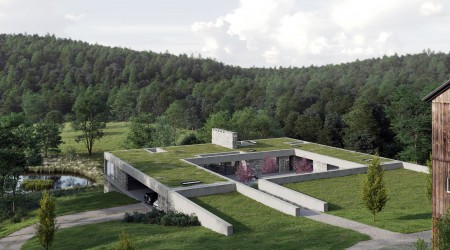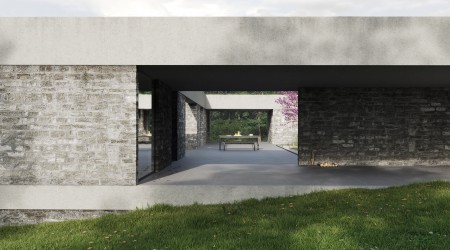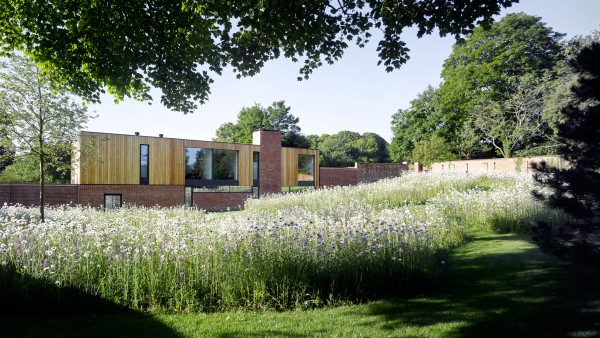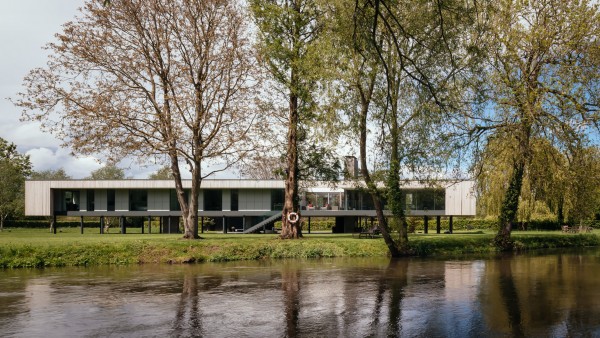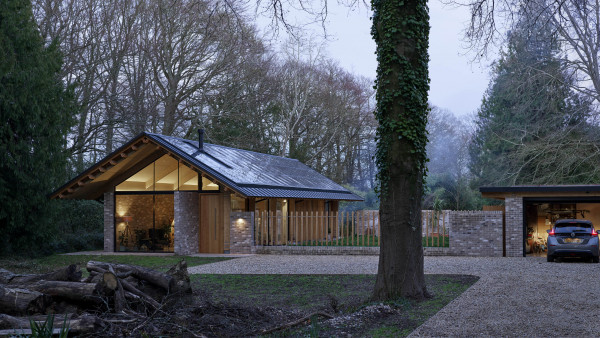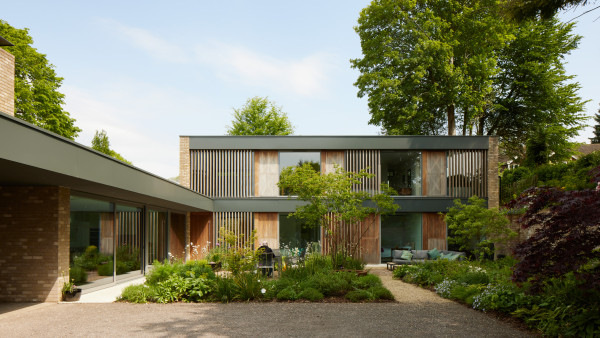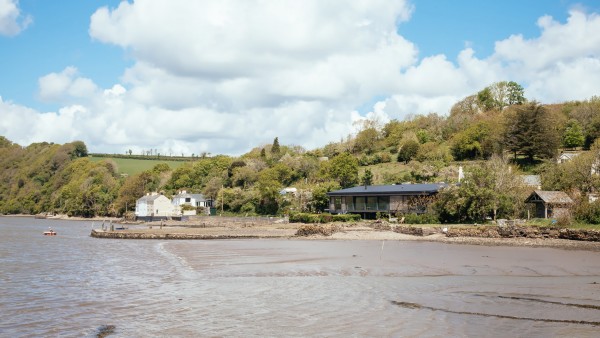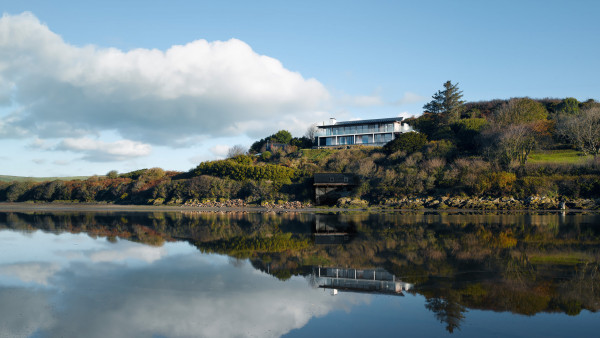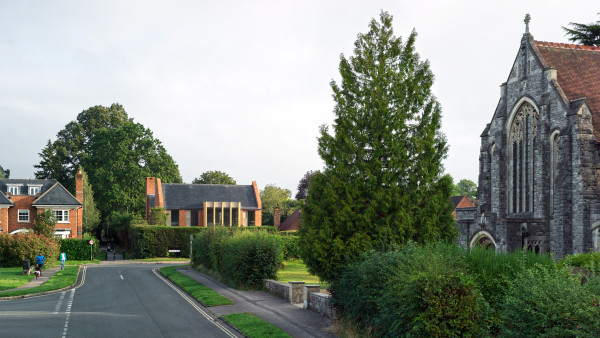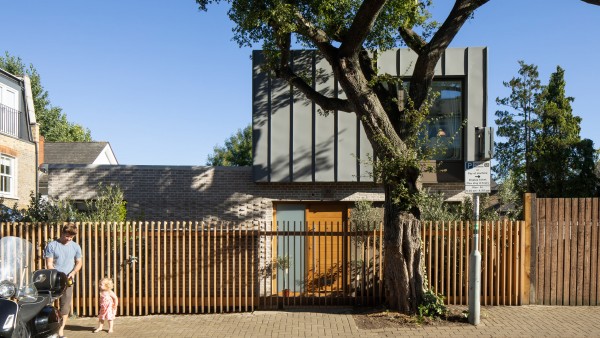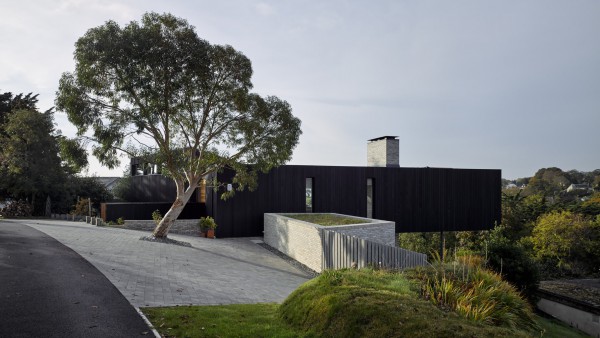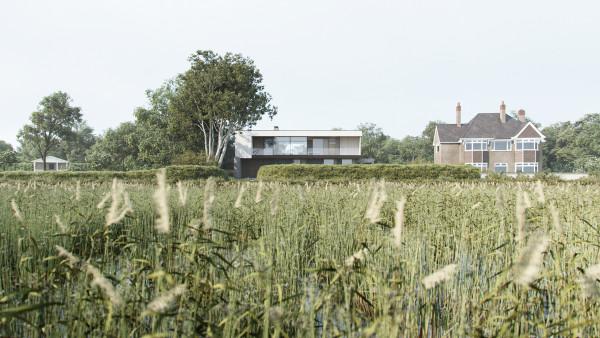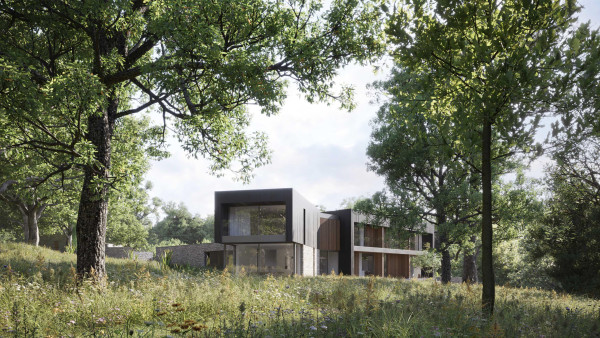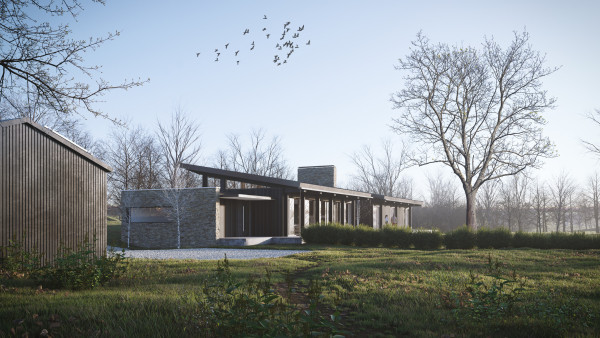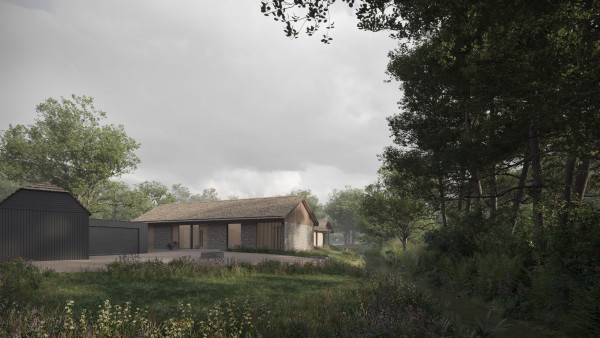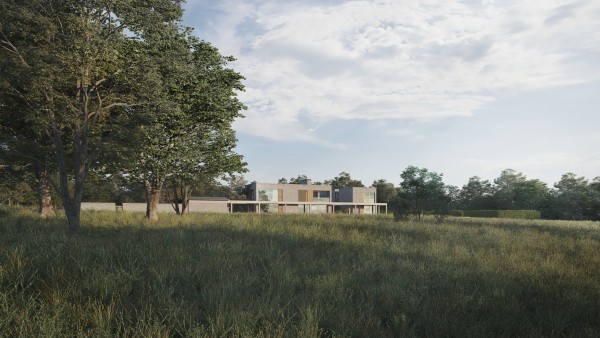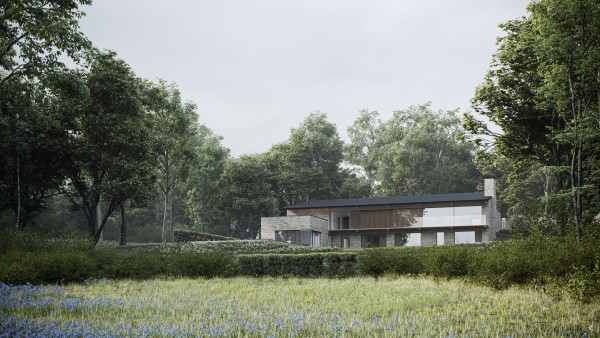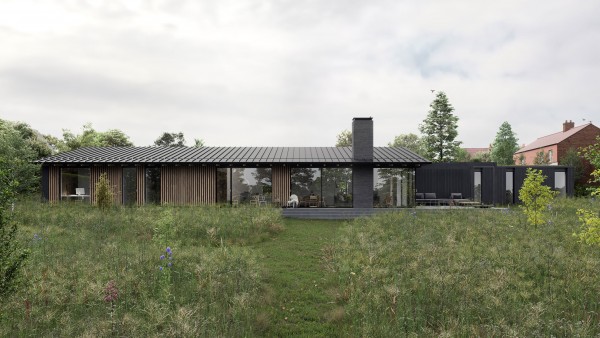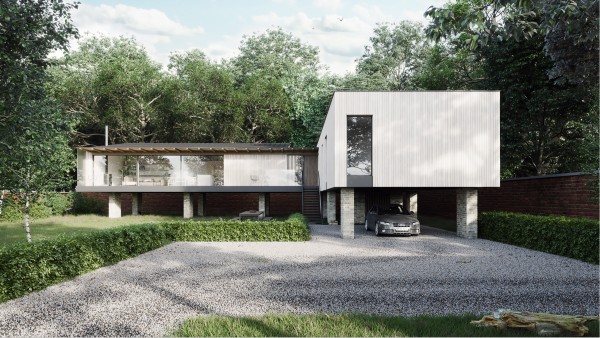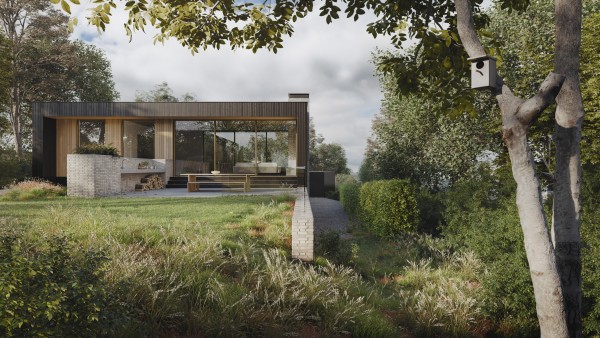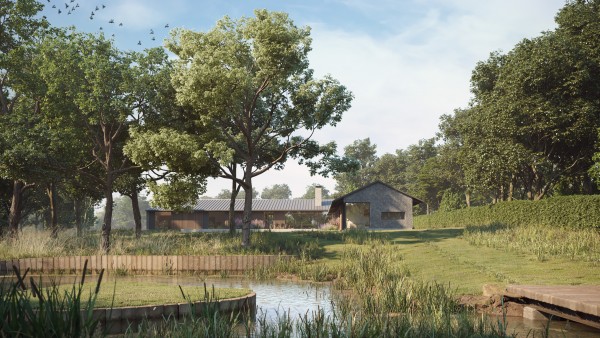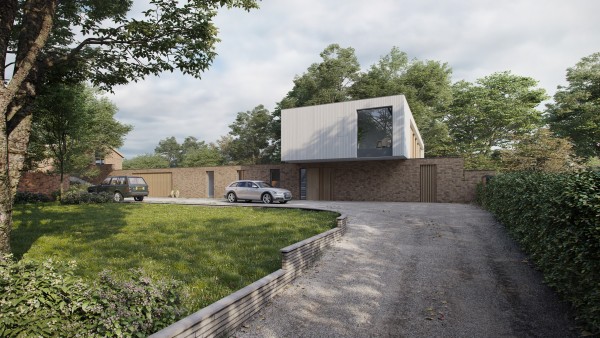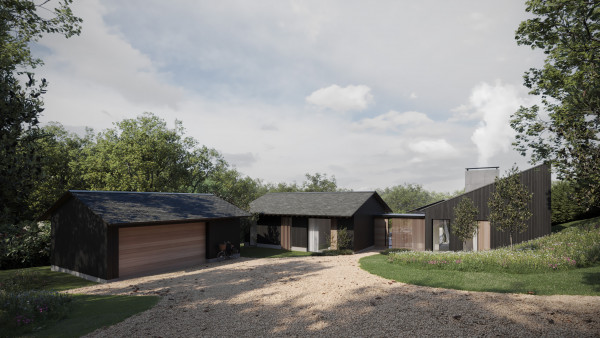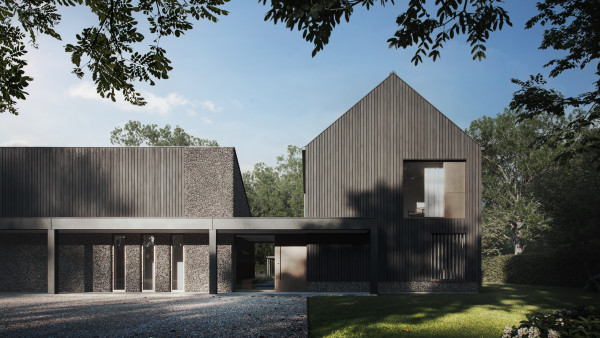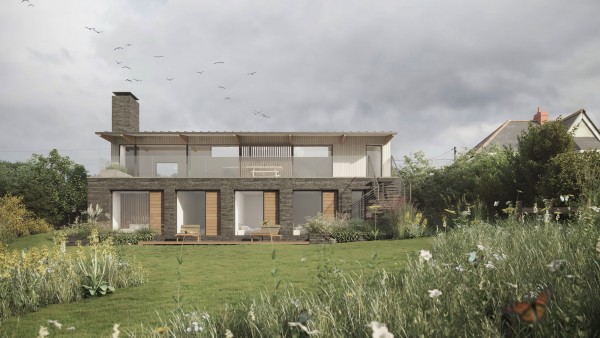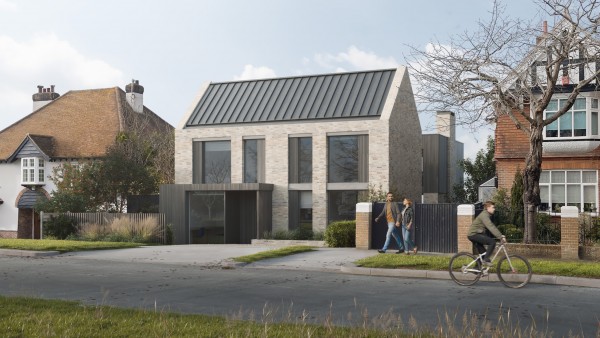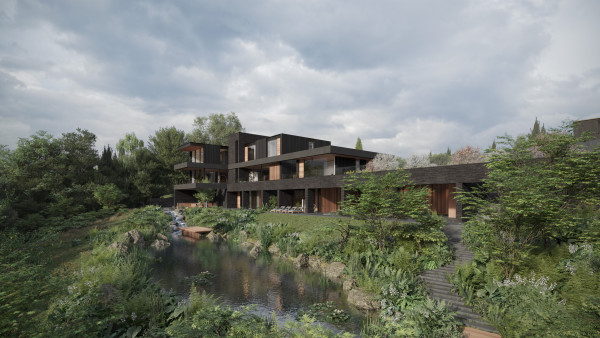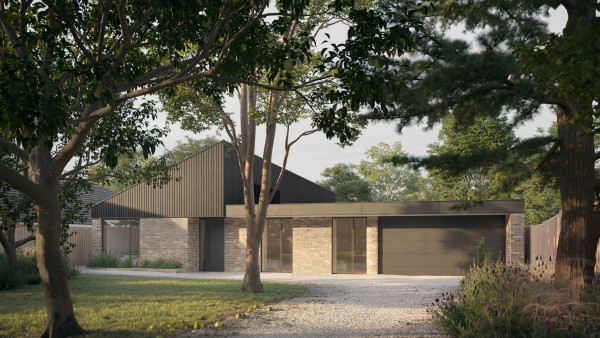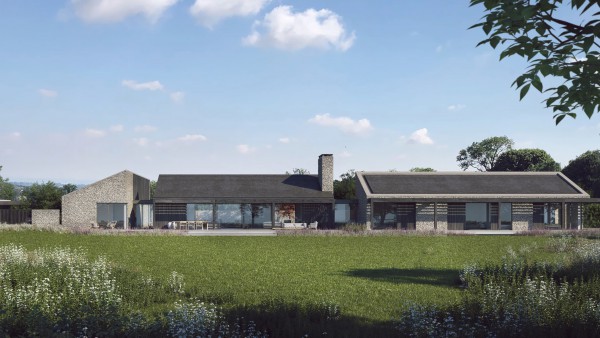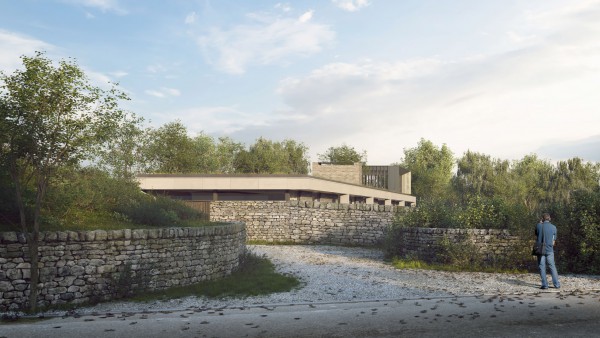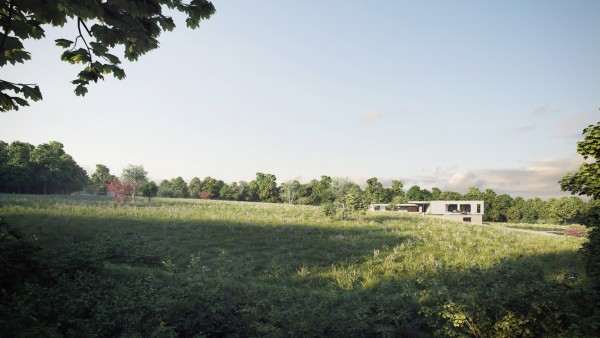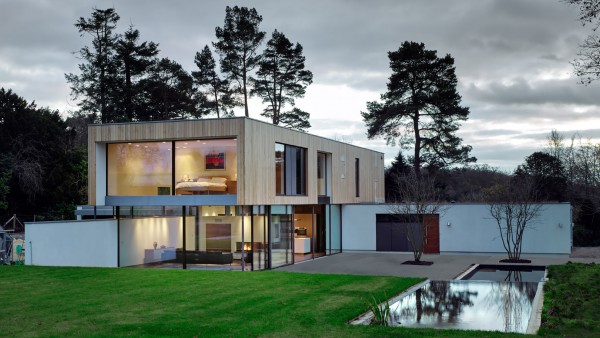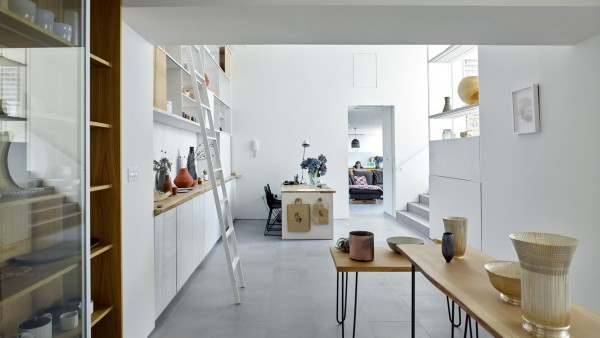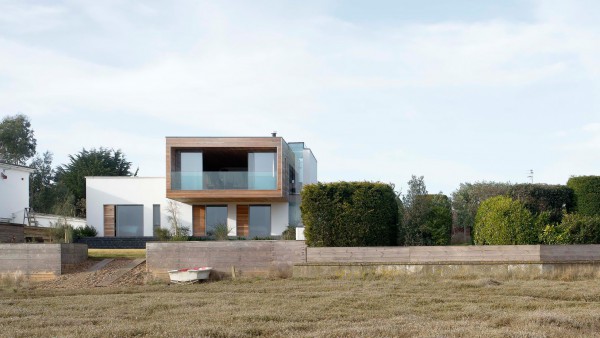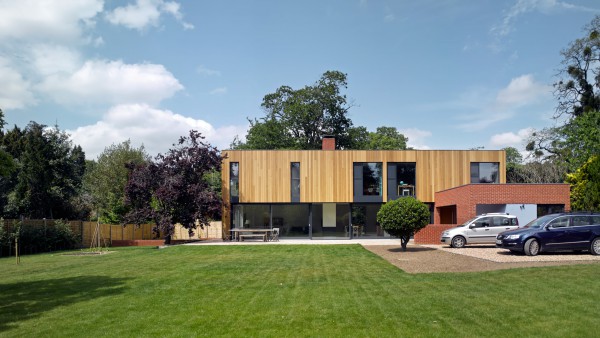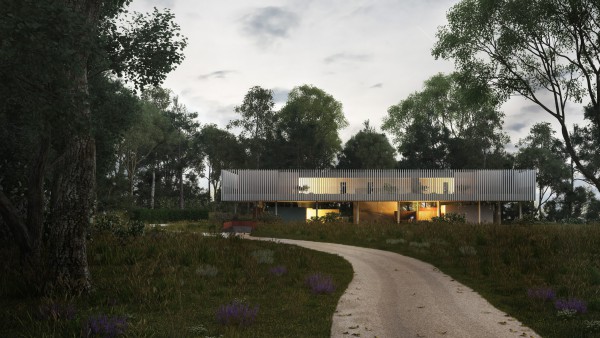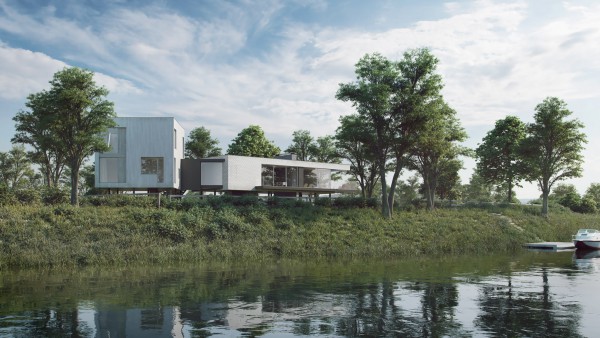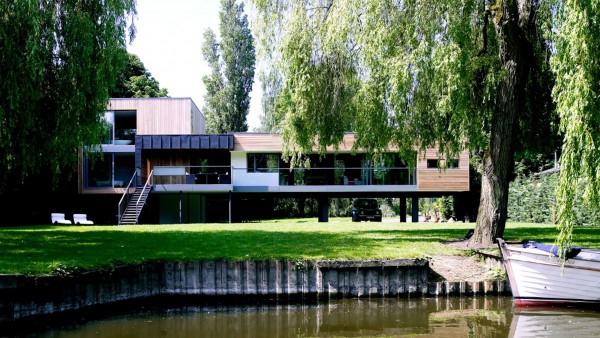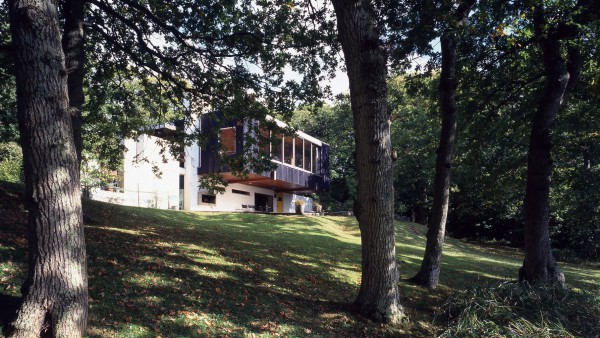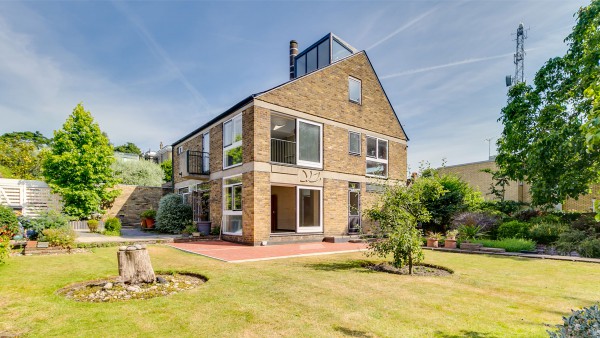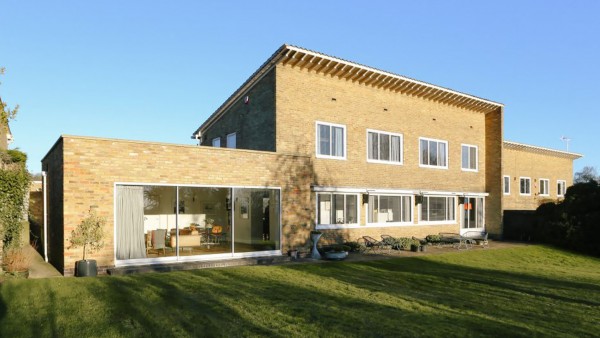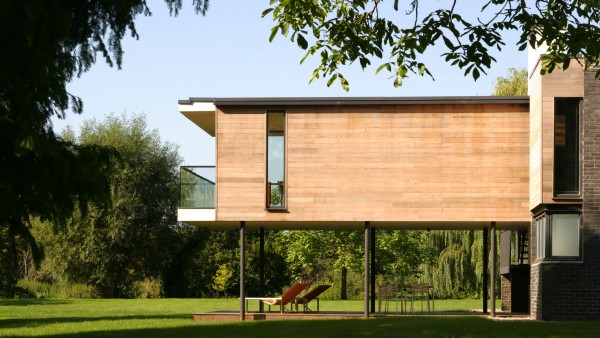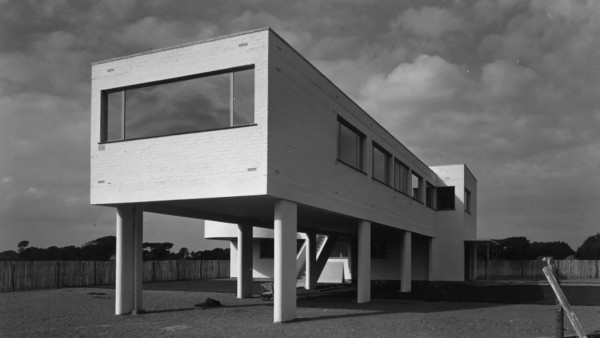For our first foray into North America, JPA were asked to design a family home for a couple and their two young children on a 120 acre site in Charlotte, Vermont, complete with its own mountain and lake.
The site, a former farm, has a number of existing outbuildings and a big, beautiful ‘Vermont barn’ which the clients use to house animals as part of a smallholding.
The site for the new house lies between the barn and the lake on a gently sloping area that ends with a scarp dropping down to the lake and enjoys distant views across the water to the hills and trees to the west. There is significant snowfall in winter when temperatures drop very low and summers are hot and dry. The challenge was to establish a harmonious relationship between the barn and the new house – neither subservient to nor competing with the imposing existing structure.
Vermont House
The solution is a house that sits within rather than sitting upon the site and so becomes an extension of the landscape. The roof becomes part of the ground plane, a green platform in front of the barn from which a generous courtyard is carved out forming a sheltered external space and bringing light and air deep into the plan. As the ground falls away the building emerges from the ground on three sides with each elevation revealing itself as a retaining wall punctured by large openings facing the views.
The idea of a platform is a fundamental architectural element, from Mayan temples built upon high platforms, to Persepolis. The architect of the Sydney Opera House, Jørn Utzon used this device in many of his projects and wrote that,
‘As an architectonic element, the platform is fascinating. I lost my heart to it while on a study trip to Mexico… All the platforms in Mexico are placed very sensitively in the landscape, always the creation of a brilliant idea. They radiate huge force. You feel firm ground beneath you, as when standing on a great cliff.’
A track leads to the southern side of the house where a carport creates an entrance portico with a glimpse into the courtyard and entrance door beyond.
Once inside, a boot room and cloakroom lie to one side while to the other is a staircase down to a library – a double-height space at the lower level enjoying views to the west and providing level access to the outside and a path to the lake.
An open plan kitchen-dining-living room occupies the centre of the plan with voids cut out either side to form small terraces. To the northern end is a bedroom zone: master bedroom suite with en suite and a yoga room to one end and two children’s bedrooms facing onto the courtyard. A studio/ workshop occupies the northern wing, separated from the house by a terrace with views onto a small ravine through which water flows during the spring melt.
The lower level provides space for guest bedrooms, storage, plant and future expansion.
The house is a concrete-framed structure. Concrete slab edges are expressed on the facades to emphasize the horizontal, while walls are infilled with rubble stone and glass. A central stone chimney marks the presence of a subterranean structure and signals ‘home’.
The house has a solid, permanent presence with large openings and voids that erode the mass. Magnificent views to the lake and hills are balanced with the more intimate, sheltered courtyard garden at the heart of the home which opens onto a sun terrace in the south and a river terrace in the north. External steps rise from the courtyard and land on the green roof terrace so connecting the house back to the barn building.
The upper level of the house has a GIA of 380M2 (4090 sq ft) plus expandable accommodation on the lower level of 150 M2 (1610 sq ft).
| Status | Unrealised |
| GIA m2 | 525 m2 |
| Project Team | Adam Jundi |
| Photography | © Found & Co |
